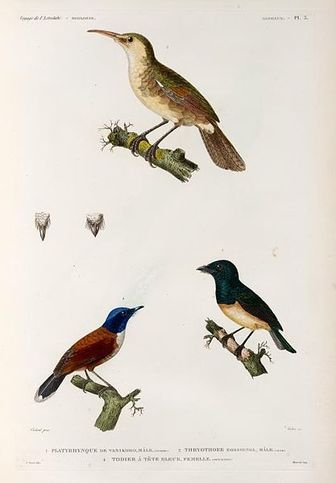Acrocephalus luscinius
The species is approximately 17 cm long, and is greyish olive-brown above with a pale-yellow underside. It inhabits wetlands, thickets and the margins of forests. The female is slightly smaller than the male. Both sexes have a long bill compared to other reed warbler species.

The Acrocephalus luscinius is classified as Critically Endangered (CR), facing an extremely high risk of extinction in the wild.
Range & population Acrocephalus luscinius is historically known from Guam (to USA), Saipan, Alamagan, Aguijan and Pagan in the Northern Mariana Islands (to USA). It was extirpated from Guam in the late 1960s, and from Pagan before 1981. A tiny population perhaps survives on uninhabited Aguijan (1-6 birds) and on Alamagan (c.346), but the majority of the population occurs on Saipan. Abundance (density times the area of Saipan, 115. More
Family : Sylviidae
Genus : Acrocephalus
Species : luscinius
Authority : (Quoy & Gaimard, 1830)
